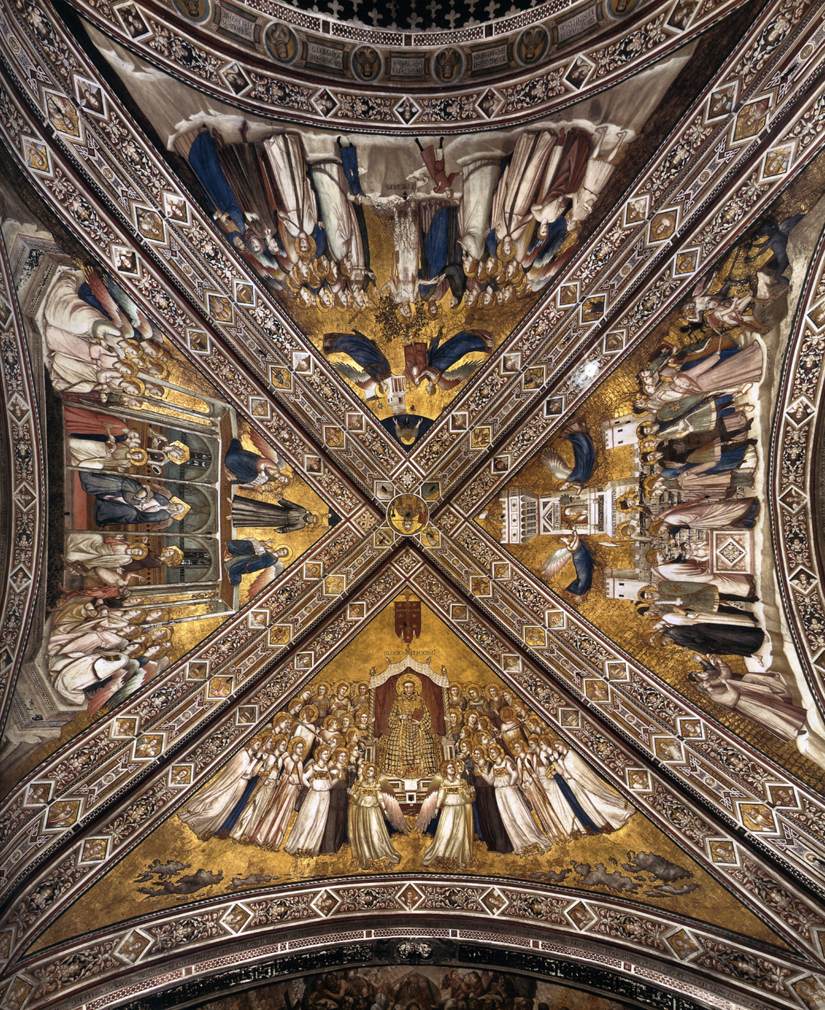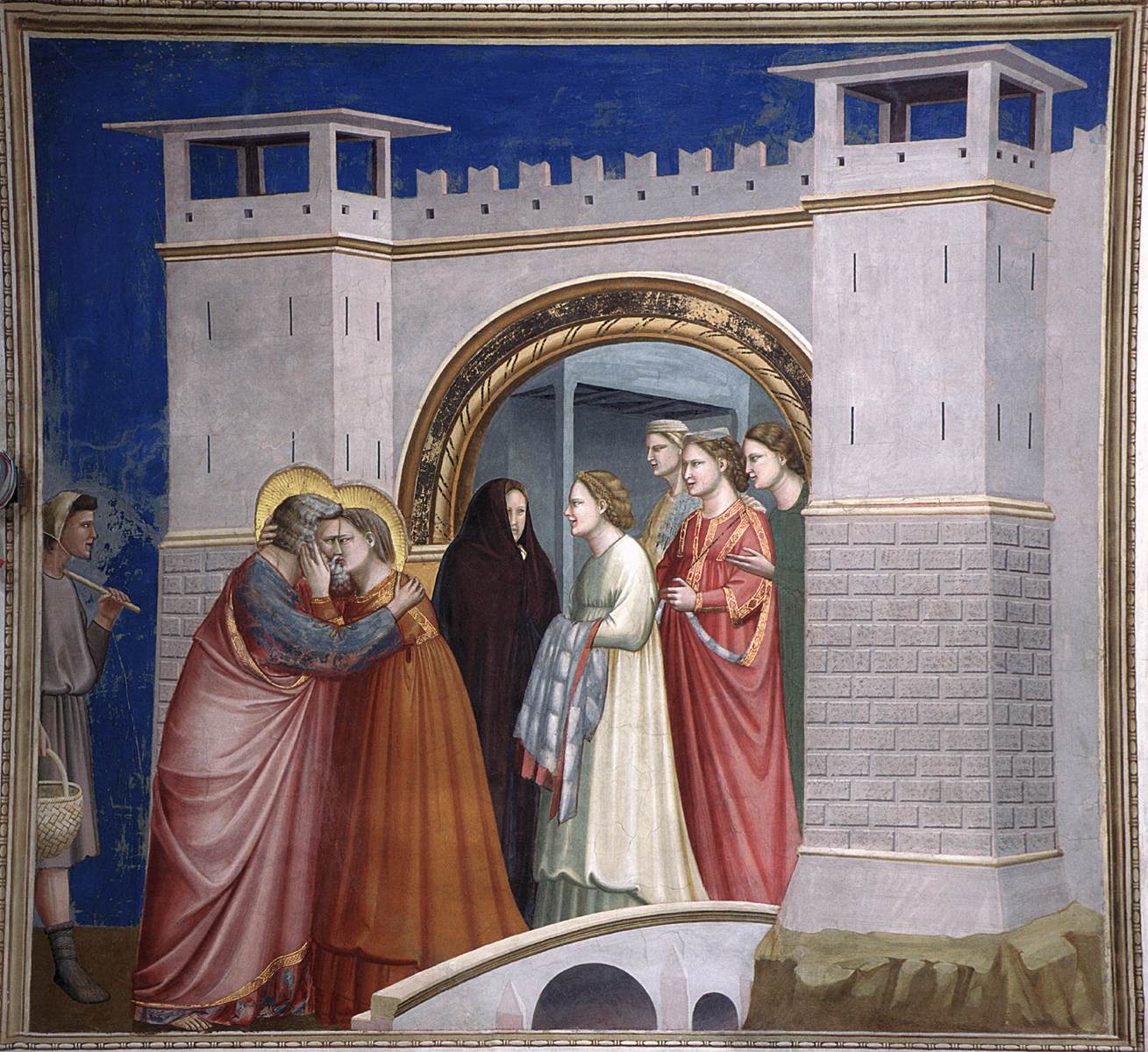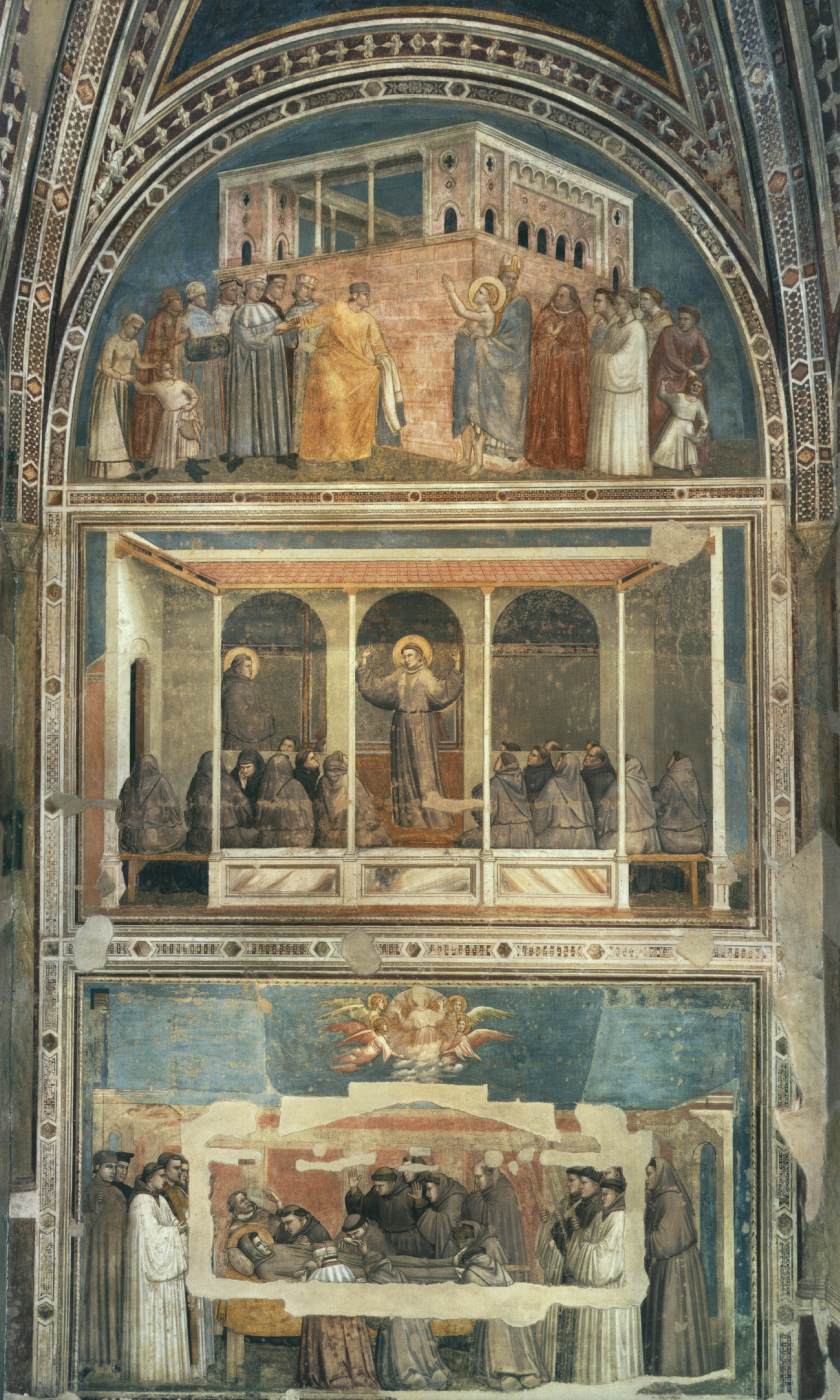On 20 January 1330 Robert of anjou, the King of Naples, demonstrated his admiration and affection for the painter Giotto by nominating him a familiaris, namely a member of the king’s household. Now recognized as one of the most path-breaking artists of all times, Giotto was already held in high esteem by his contemporaries, a unique occurrence at a time where art was considered nothing more than a craft. He was so well-known that he was famously mentioned by poet Dante Alighieri in his poem the Divina Commedia (Purgatory, Canto XI, lines 91–95) as an example of worldly fame.
Indeed, Giotto was in great high demand during the years 1328–33, which he spent working for the Anjous in Naples. Helped by his assistants, he painted the King’s chapel at the castle of Castel Nuovo, as well as other paintings. Sadly, no works of this period survive. Despite his success, the painter soon decided to return to Florence, the city where he is first documented, close to his hometown of Vespignano. The decision was influenced by the Florentine council’s generous offer to nominate Giotto Chief of the Works for the cathedral, city walls, fortifications, and all other major projects in the city, as long as he agreed to remain in Tuscany: as they argued, it was imperative to retain Giotto’s services as he was the best painter in the world.
Reference: Creighton E. Gilbert, “Giotto.” Grove Art Online, Oxford University Press http://www.oxfordartonline.com/subscriber/article/grove/art/T032431.
Franciscan allegories, c. 1320, fresco, Lower Church, San Francesco, Assisi. Source: Web Gallery of art.
Horseman of the Apocalypse, c. 1320, Lower Church, San Francesco, Assisi. Source: Web Gallery of art.
Scenes from the Life of Joachim: Meeting at the Golden Gate, 1304-06, fresco, Cappella Scrovegni (Arena Chapel), Padua. Source: Web Gallery of art.
The Seven Vices: Foolishness, 1306, fresco, 120 x 55 cm, Cappella Scrovegni (Arena Chapel), Padua. Source: Web Gallery of art.
Scenes from the Life of St Francis (north wall), 1325-28, fresco, Bardi Chapel, Santa Croce, Florence. Source: Web Gallery of art.
Scenes from the Life of St Francis: Apparition at Arles (detail), 1325-28, fresco, width of detail 25 cm, Bardi Chapel, Santa Croce, Florence. Source: Web Gallery of art.






